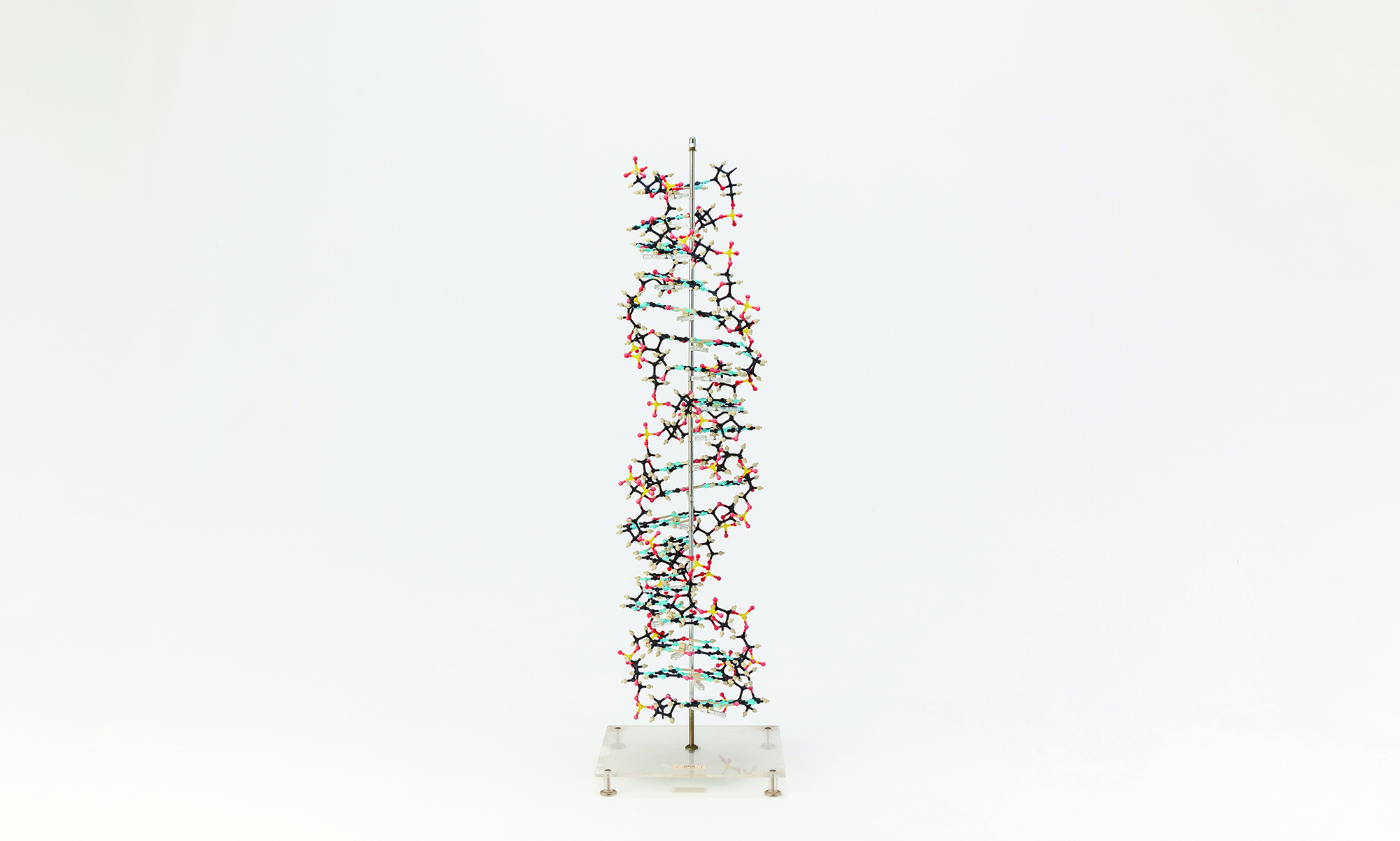生命の設計図・DNAから複雑な組織ができるまでDesign of Life: From DNA to Complex Tissue
化学生命工学専攻Department of Chemistry and Biotechnology

展示は生命の設計図とも言えるゲノム DNA 配列のごく一部を約1億倍に拡大した模型です。DNA配列は A,G,T,C の 4 つの分子がつながってできています。
その並びは、我々の身体を作るための情報をコードしており、我々の身体を作る細胞1つ1つに収納されています。DNA配列から読み出された情報を元にさまざまなタンパク質が作られ、細胞のなかで働きます。DNA配列の情報がおかしくなり正しいタンパク質ができなくなることは病気の要因になります。細胞ごとに DNA配列から読み出される情報が異なることにより、細胞の種類が分かれていきます。ニューロンとは知能や感覚をつかさどる細胞であり、組織化して脳を作り上げます。
化学生命工学科は、複雑な生命の仕組みを化学の視点で紐解く研究においても世界をリードしています。
DNA分子模型
寸法:830×250×250
所蔵:東京大学 大学院工学系研究科 化学生命工学専攻
パネル
寸法:850×900
所蔵:東京大学 大学院工学系研究科 化学生命工学専攻
The model located in the center is a tiny part of the genomic DNA sequence (magnified by 100 million). DNA sequence consists of four molecules, A, G, C, T. The sequences of those four molecules (an example is shown in the background of the panel) convey design plans for building our bodies.
Each of our cell possesses the DNA sequence and makes proteins based on the information coded in the sequence. Errors in the sequence result in the production of malfunctioning proteins, which sometimes causes diseases. Even all the cells possess the same genomic DNA sequence, each type of cells extracts distinct information from the sequence and acquires its own unique functions. The cell depicted in the panel is a cell type called neuron, which comprises the brain and plays pivotal roles in exhibiting our intelligence and cognitions.
Revealing the mechanisms underlying our life with respect to chemistry is one of the research fields where Department of Chemistry and Biotechnology is leading the world.
DNA model
Size: 830×250×250
Collection: Department of Chemistry and Biotechnology, School of Engineering, The University of Tokyo
Panel
Size: 850×900
Collection: Department of Chemistry and Biotechnology, School of Engineering, The University of Tokyo

